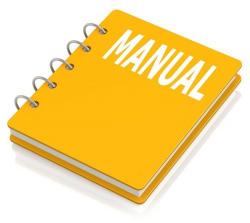Ford E-Series 2006 Factory Service & Shop Manual
Catalog:
Model:
Complete workshop & service manual with electrical wiring diagrams for Ford E-Series 2006. It's the same service manual used by dealers that guaranteed to be fully functional and intact without any missing page.
This Ford E-Series 2006 service & repair manual (including maintenance, overhaul, disassembling & assembling, adjustment, tune-up, operation, inspecting, diagnostic & troubleshooting…) is divided into different sections. Each section covers a specific component or system with detailed illustrations. A table of contents is placed at the beginning of each section. Pages are easily found by category, and each page is expandable for great detail. The printer-ready PDF documents work like a charm on all kinds of devices.
· E11 — E-150 wagon
· E14 — E-150 van
· E24 — E-250 van
· E31 — E-350 wagon
· E34 — E-350 van
· E35 — E-350 base cutaway
· E39 — E-350 stripped chassis
· E45 — E-450 Super Duty cutaway
· E49 — E-450 Super Duty stripped chassis
· S24 — E-250 van (extended body)
· S31 — E-350 wagon (extended body)
· S34 — E-350 van (extended body)
· L — 5.4L, SOHC, EFI, V8, Gas
· P — 6.0L, OHV, V8, Diesel
· S — 6.8L, SOHC, EFI, V10, Gas
· W — 4.6L, SOHC, EFI, V8, Gas
EXCERPT:
2006 E-Series
Workshop Manual
Quick Links
Introduction
Specifications
Metrics
Torque Wrench Adapter Formulas
Acronyms
Alphabetical Index
Table of Contents
1: General Information
00: Service Information
2: Chassis
04: Suspension
05: Driveline
06: Brake System
11: Steering System
3: Powertrain
03: Engine
07: Automatic Transmission
09: Exhaust System
10: Fuel System
4: Electrical
12: Climate Control System
13: Instrumentation and Warning Systems
14: Battery and Charging System
15: Audio Systems
17: Lighting
18: Electrical Distribution
19: Electronic Feature Group
5: Body and Paint
01: Body
02: Frame and Mounting
…
Line Pressure Control Solenoid (PC-A)
The line pressure control (PC-A) solenoid is an inversely proportional 3-port device. The pressure output is inversely proportional to the applied DC current supplied through an electronically controlled driver, which varies the current between 0 and 1 amp from the powertrain control module (PCM). The PC-A solenoid controls the line pressure circuits.
Torque Converter Clutch (TCC) Solenoid
The torque converter clutch (TCC) solenoid is a directly proportional VFS. The pressure output of this 3-port device is proportional to the applied DC current supplied through an electronically controlled driver which varies the current between 0 and 1 amp from the powertrain control module (PCM).
Shift Solenoid Pressure Control Solenoids (SSPC-A, SSPC-B, SSPC-C, SSPC-D, SSPC-E)
The intermediate (SSPC-C), low/reverse (SSPC-E), and overdrive (SSPC-B) clutches are each controlled by a directly proportional variable force shift (VFS) solenoid. The coast (SSPC-A) and the direct clutch (SSPC-D) are each controlled by an inversely proportional VFS. All shift pressure solenoids are electronically controlled by the powertrain control module (PCM) which varies the current from 0 to 1 amp (direct proportional) or 1 to 0 amp (indirectly proportional).
Line Pressure Relief Valve
The solenoid body assembly contains an over-pressurization relief valve that will limit the line pressure through the (PC-A) solenoid and feedback to the pump main regulator valve. The LPC relief valve controls line pressure spikes when cold. If this valve fails you may see concerns with the filter found in the solenoid body assembly.
Transmission Range (TR) Position Sensor Assembly
The transmission range (TR) position sensor assembly is an internally mounted sensor that includes the detent spring, rooster comb and bracket, located next to the solenoid body. The sensor is non adjustable and is not serviced independently. The components of the TR position sensor are factory adjusted to each other and a new sensor must be installed as a calibrated assembly. The TR position sensor contains electronic circuitry that provides the PCM a fixed frequency at a duty cycle for each of the various positions of the manual lever (PARK, REVERSE, NEUTRAL, DRIVE, M3, M2 and M1) to the PCM. The PCM uses the TR position sensor signal for engine functions (start, reverse lamps) and for line pressure control, shift scheduling and TCC operation.
…





